-
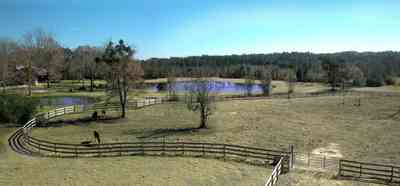
-
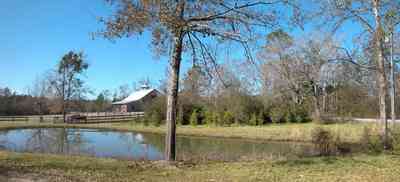
-

-

Cattle graze on the extensive acreage.
-
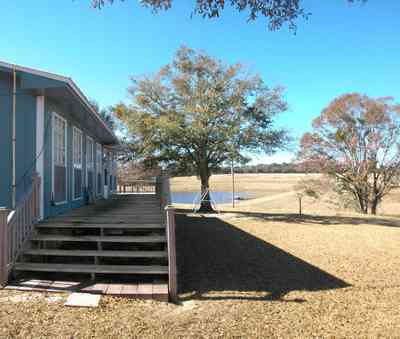
-

The road follows the gently rolling hills.
-
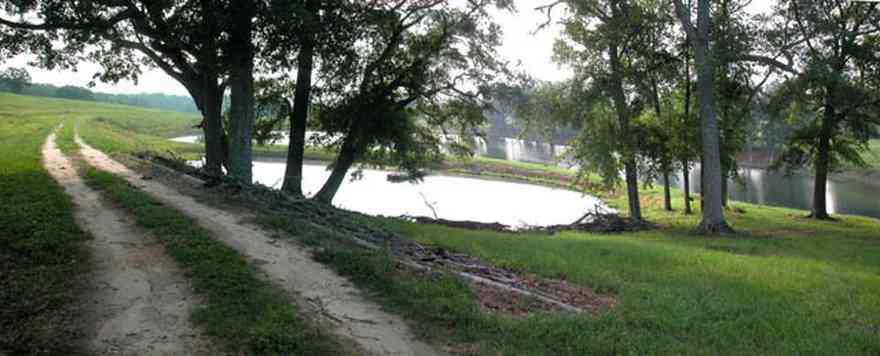
There are several lakes in the valley. The road winds around the lakes.
-
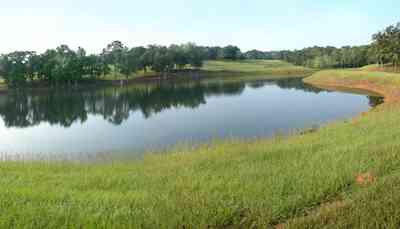
-
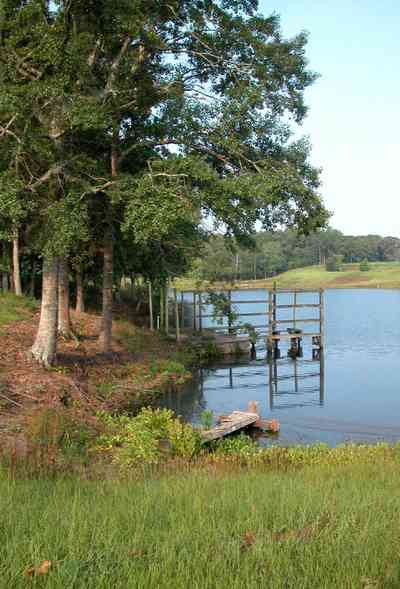
-

The 15 acre lake is located in rural Escambia County.
-

-

-
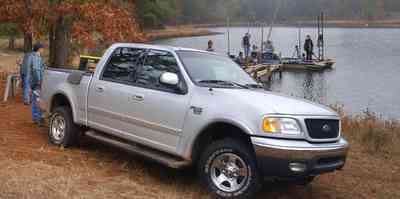
The lake was the site for a Ford Truck commercial.
-
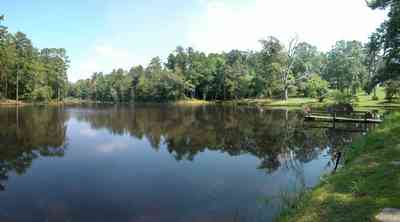
A freshwater spring flows through the southwest corner of the property.
-
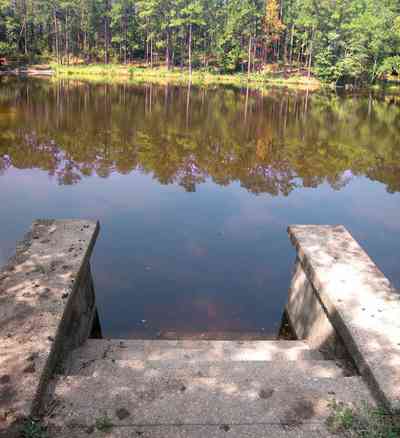
The steps lead into a shallow area. The pond was used as a swimming pool.
-
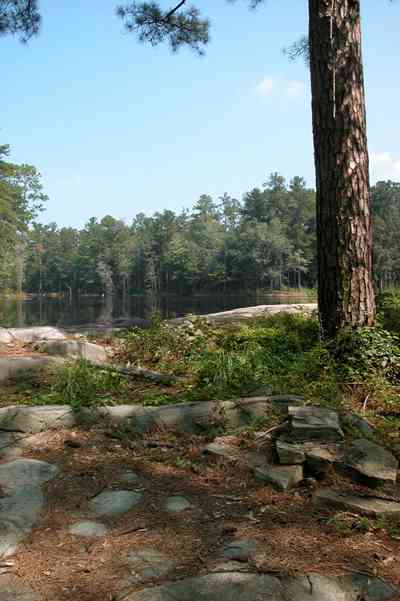
Tannenheim is German for fir tree house.
-

This view of the north side of the farm shows the catfish pond in the upper left frame. There are a number of catfish ponds around the property. A traditional farm windmill can be seen in the left corner of the photograph.
-

The catfish pond is on the right of the photograph.
-

The rolling irrigation system can be seen in the center of the frame.
-
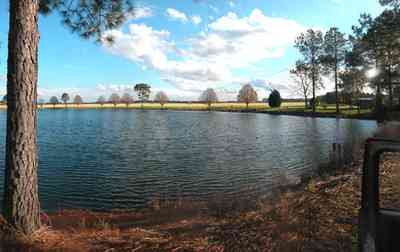
This is the northern most edge of the catfish pond. The pond is lined with fir and pear trees.
-

The fields of turf can be seen as a green line in the upper quadrant of the frame above the pond.
-

The outbuildings are located to the west of the catfish pond.
-

Much of the produce in the area is grown in the Elberta farm community.
-
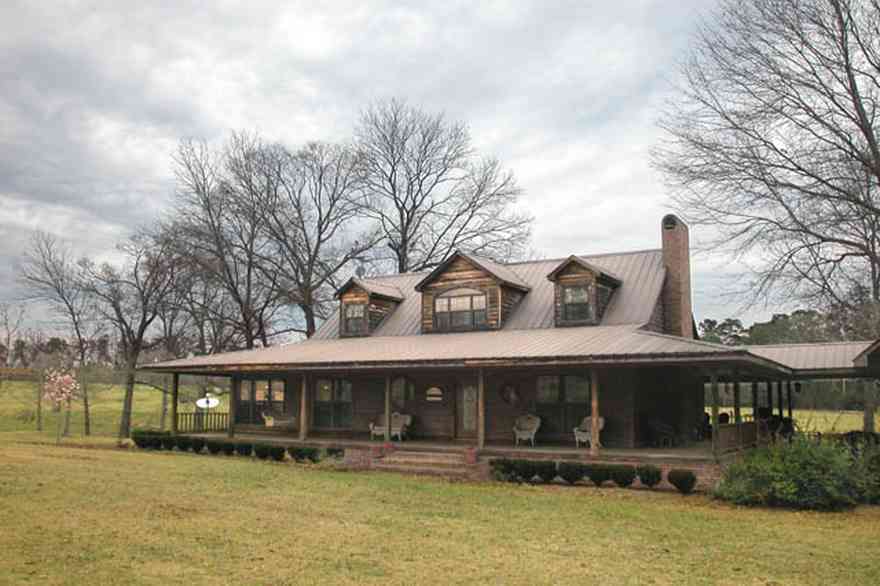
The house is situated on 40 acres of pasture land.
-
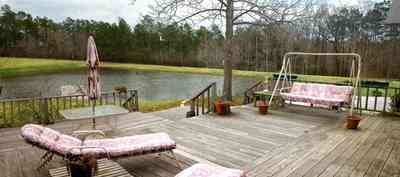
-

-

-
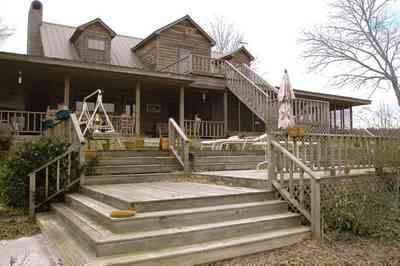
A series of decks and walkways lead down the hill in the rear of the home.
-
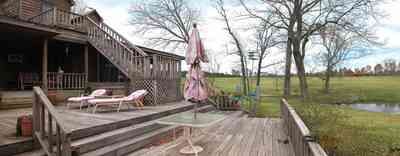
-
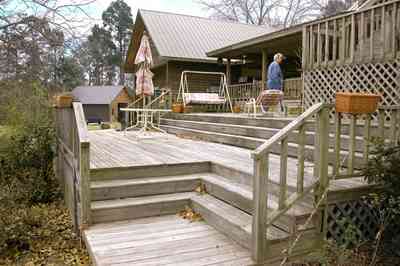
-

-
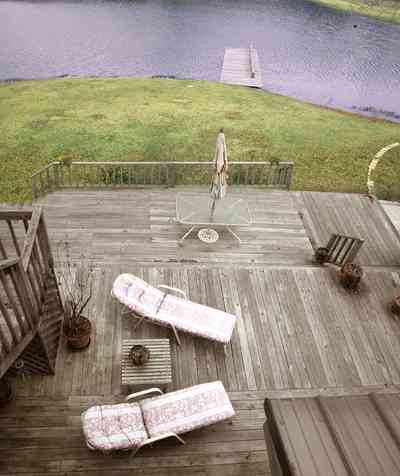
-

-
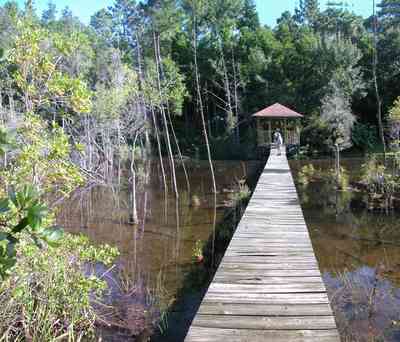
Water oak, overcup oak, diamond-leaf oak, water hickory, sugarberry, several species of ash, American sycamore and river birch are among the more commonly seen trees.
-
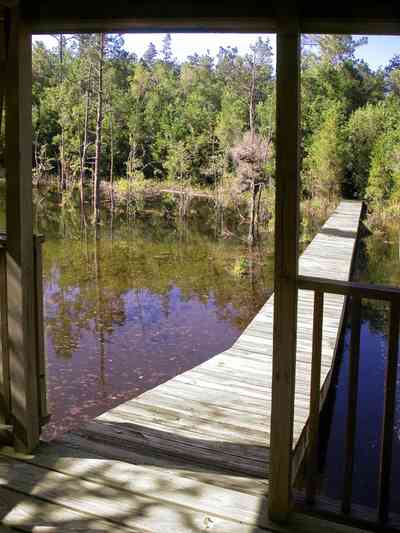
-
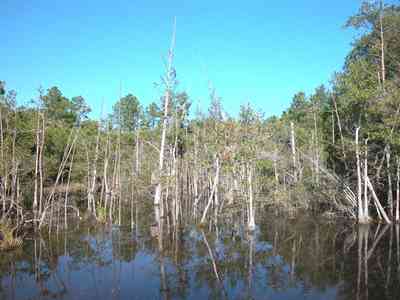
-

-
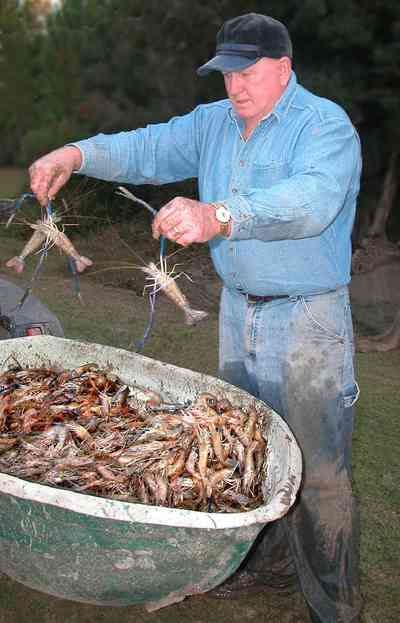
-
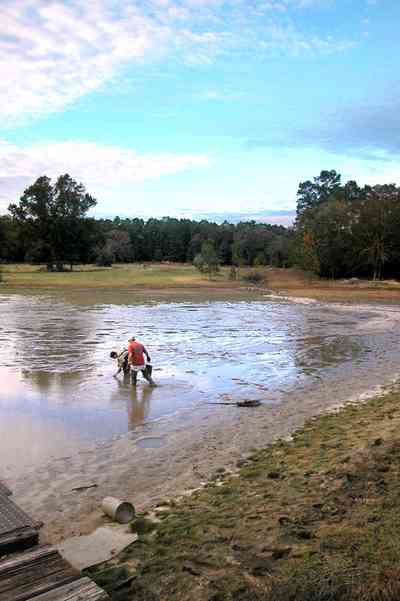
-
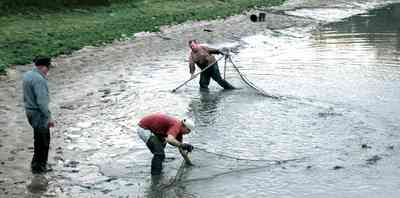
-

-
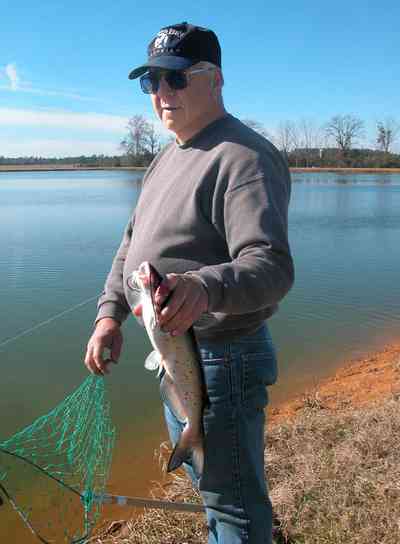
George Carpenter holds a 3 pound catfish which is an average size for the pond.
-
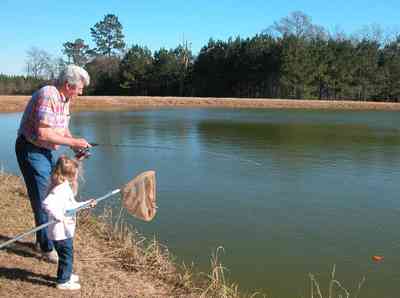
George Carpenter's granddaughter, Grace assists Dave Daughtry as he hooks a large catfish.
-

George comes to the rescue and lands the four and one-half pound catfish.
-

Grace takes a rest with her mother, Kaye Perry, George and Martha's daughter.
-
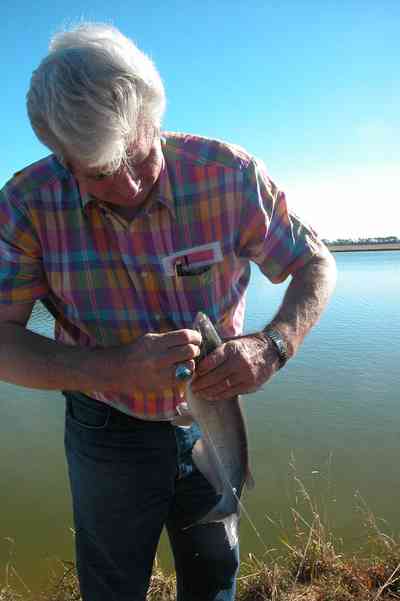
Extracting the hook is a delicate operation. Dave proceeds carefully, grasping the fish behind the gills while being careful to avoid getting stuck by the spiny backfin.
-

Dave Daughtry is excited to catch a 4 1/2 pound catfish.
-
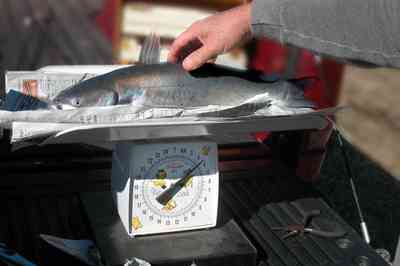
Each catfish is weighed. The average catfish costs $1.50 per pound when the fish is caught at the pond.
-
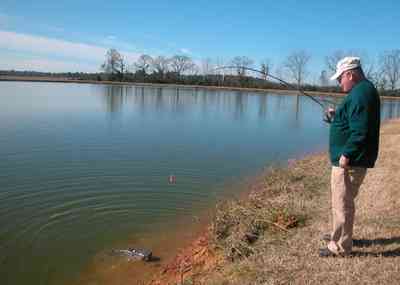
Mayor Bennie Barnes hooks a large catfish. He and Donnie Waters are planning a fish fry for Margorie Waters who is retiring from her job with the City of Century. It takes about an hour for the Mayor and Donnie to catch 20 fish.
-
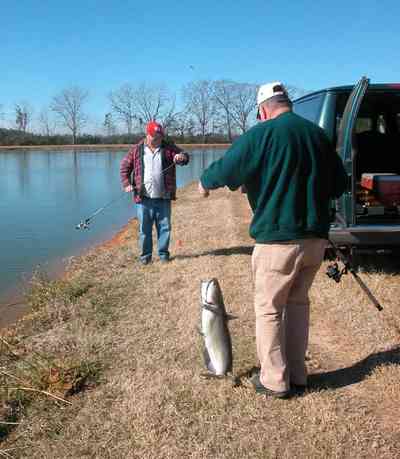
Mayor Barnes carries his fish to the scales for weigh-in.
-
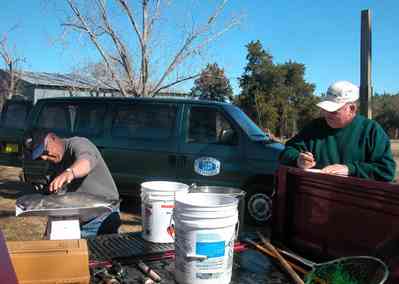
Mayor Barnes records the weight of his prize catch just before it is cleaned.
-
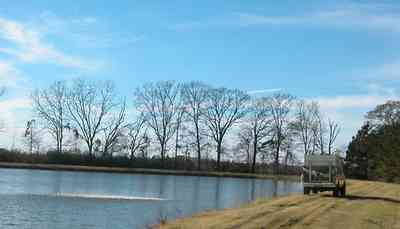
The feeding machine is mounted in the back of a pickup truck. Feed is sprayed about 20 feet over the pond. The small pellets are snapped up by the catfish. During the summer season, the fish can eat one ton of food per day.
-
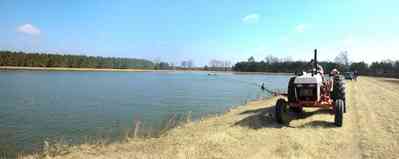
The catfish harvest begins by slowly seining the pond, beginning at one end with two tractors dragging the net, one on each side.
-
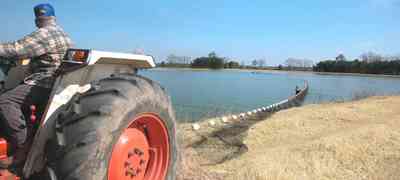
George drags one end of the seine net.
-

In this panorama of the pond, one man can be seen on right of the photograph. His job is to hold down the mud line so that the fish cannot escape under the seine net.
-
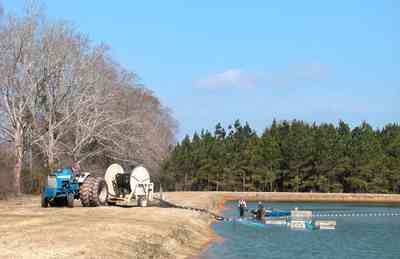
The larger tractor hauls a reel on which the seine net is slowly rewound.
-
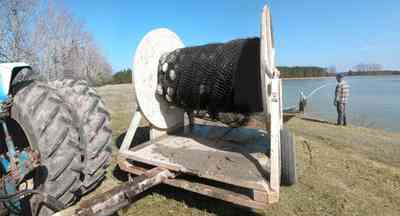
George Carpenter watches the seine net gradually close a small circle on the west bank of the pond.
-

The two harvesters in the lower frame are attaching "the sock" which is used to grade the fish.
-

The fish are contained in a narrow area, defined by the buoys on the seine net.
-

The trapped catfish swirl in the muddy water of the seine net.
-
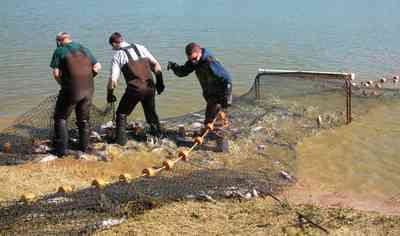
The fish are being driven into the sock. Small fish can escape through the netting while catfish 3 pounds and above remain in the sock. The grading process takes about 24 hours.
-
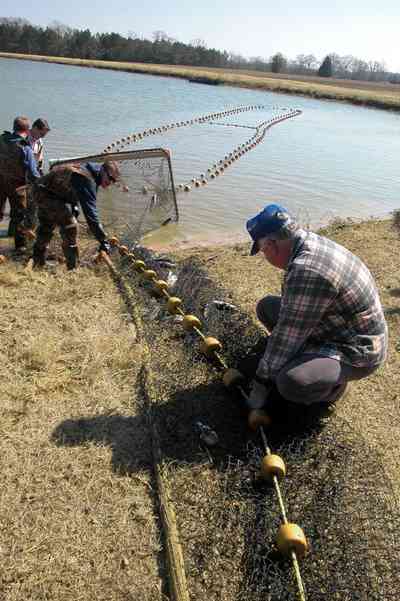
George rescues catfish that are caught in the seine net..
-
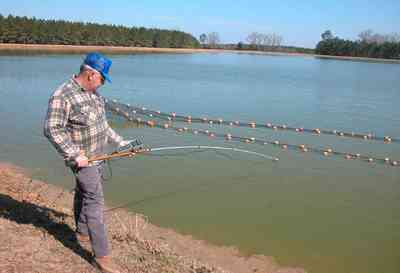
George is measuring the oxygen content of the water. This is an important task done as many as four times during a 24-hour period. The water is aerated at critical times. The sock will remain in place for 24 hours while the small fish escape the net.
-
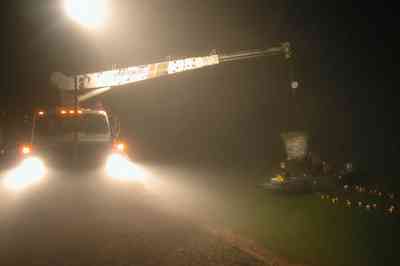
There are no chemicals used in the pond. it is a totally controlled environment. A sample fish is sent to the processing plant for assessment. Tasters at the plant decide when the fish are ready for harvest. A select few fish from each load are ground up and anaylzed for chemicals by the USDA.
-
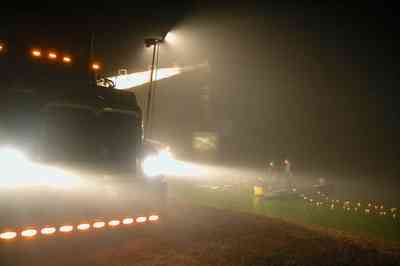
The taste of the fish depends on the quality of feed and water conditions. With the depletion of fish in the sea, catfish farming is becoming a growing industry.
-

There are catfish ponds on both sides of the dirt road.
-

The pond is the foreground is one of many catfish ponds in the area. There are over 1,000 such ponds in the neighborhood.
-
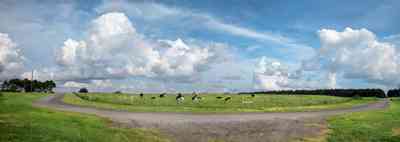
-

The farm is located at the intertection of Morgan and Arthur Brown Road.
-
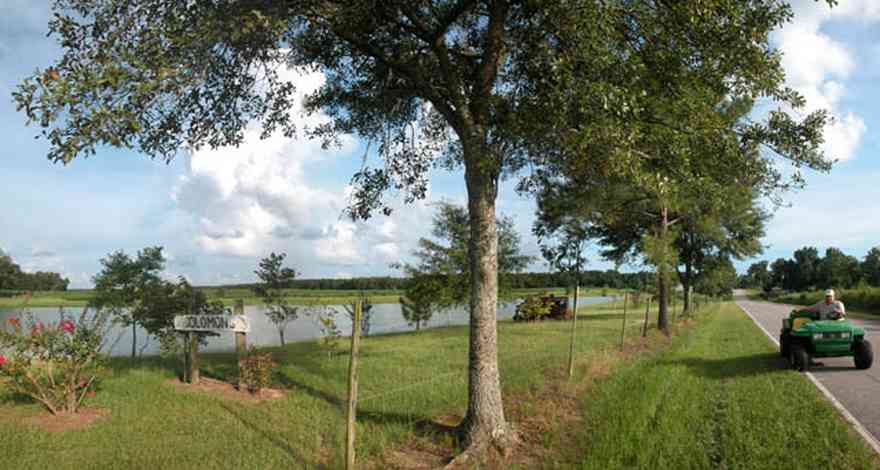
-
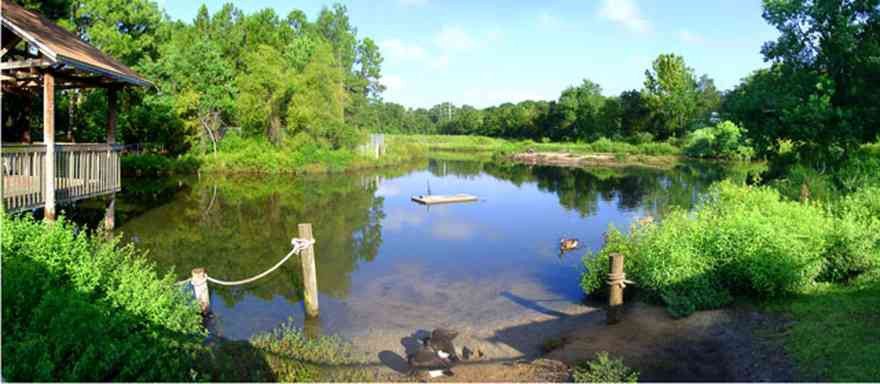
-
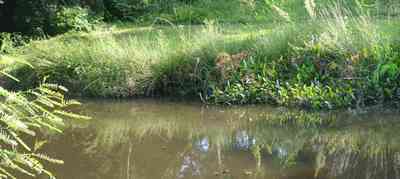
The creek extends from behind the Gulf Power office on Pace Boulevard to the wildlife refugee.




 Cattle graze on the extensive acreage.
Cattle graze on the extensive acreage.
 The road follows the gently rolling hills.
The road follows the gently rolling hills. There are several lakes in the valley. The road winds around the lakes.
There are several lakes in the valley. The road winds around the lakes.

 The 15 acre lake is located in rural Escambia County.
The 15 acre lake is located in rural Escambia County.

 The lake was the site for a Ford Truck commercial.
The lake was the site for a Ford Truck commercial. A freshwater spring flows through the southwest corner of the property.
A freshwater spring flows through the southwest corner of the property. The steps lead into a shallow area. The pond was used as a swimming pool.
The steps lead into a shallow area. The pond was used as a swimming pool. Tannenheim is German for fir tree house.
Tannenheim is German for fir tree house. This view of the north side of the farm shows the catfish pond in the upper left frame. There are a number of catfish ponds around the property. A traditional farm windmill can be seen in the left corner of the photograph.
This view of the north side of the farm shows the catfish pond in the upper left frame. There are a number of catfish ponds around the property. A traditional farm windmill can be seen in the left corner of the photograph. The catfish pond is on the right of the photograph.
The catfish pond is on the right of the photograph. The rolling irrigation system can be seen in the center of the frame.
The rolling irrigation system can be seen in the center of the frame. This is the northern most edge of the catfish pond. The pond is lined with fir and pear trees.
This is the northern most edge of the catfish pond. The pond is lined with fir and pear trees. The fields of turf can be seen as a green line in the upper quadrant of the frame above the pond.
The fields of turf can be seen as a green line in the upper quadrant of the frame above the pond. The outbuildings are located to the west of the catfish pond.
The outbuildings are located to the west of the catfish pond. Much of the produce in the area is grown in the Elberta farm community.
Much of the produce in the area is grown in the Elberta farm community. The house is situated on 40 acres of pasture land.
The house is situated on 40 acres of pasture land.


 A series of decks and walkways lead down the hill in the rear of the home.
A series of decks and walkways lead down the hill in the rear of the home.




 Water oak, overcup oak, diamond-leaf oak, water hickory, sugarberry, several species of ash, American sycamore and river birch are among the more commonly seen trees.
Water oak, overcup oak, diamond-leaf oak, water hickory, sugarberry, several species of ash, American sycamore and river birch are among the more commonly seen trees.






 George Carpenter holds a 3 pound catfish which is an average size for the pond.
George Carpenter holds a 3 pound catfish which is an average size for the pond. George Carpenter's granddaughter, Grace assists Dave Daughtry as he hooks a large catfish.
George Carpenter's granddaughter, Grace assists Dave Daughtry as he hooks a large catfish. George comes to the rescue and lands the four and one-half pound catfish.
George comes to the rescue and lands the four and one-half pound catfish. Grace takes a rest with her mother, Kaye Perry, George and Martha's daughter.
Grace takes a rest with her mother, Kaye Perry, George and Martha's daughter. Extracting the hook is a delicate operation. Dave proceeds carefully, grasping the fish behind the gills while being careful to avoid getting stuck by the spiny backfin.
Extracting the hook is a delicate operation. Dave proceeds carefully, grasping the fish behind the gills while being careful to avoid getting stuck by the spiny backfin. Dave Daughtry is excited to catch a 4 1/2 pound catfish.
Dave Daughtry is excited to catch a 4 1/2 pound catfish. Each catfish is weighed. The average catfish costs $1.50 per pound when the fish is caught at the pond.
Each catfish is weighed. The average catfish costs $1.50 per pound when the fish is caught at the pond. Mayor Bennie Barnes hooks a large catfish. He and Donnie Waters are planning a fish fry for Margorie Waters who is retiring from her job with the City of Century. It takes about an hour for the Mayor and Donnie to catch 20 fish.
Mayor Bennie Barnes hooks a large catfish. He and Donnie Waters are planning a fish fry for Margorie Waters who is retiring from her job with the City of Century. It takes about an hour for the Mayor and Donnie to catch 20 fish. Mayor Barnes carries his fish to the scales for weigh-in.
Mayor Barnes carries his fish to the scales for weigh-in. Mayor Barnes records the weight of his prize catch just before it is cleaned.
Mayor Barnes records the weight of his prize catch just before it is cleaned. The feeding machine is mounted in the back of a pickup truck. Feed is sprayed about 20 feet over the pond. The small pellets are snapped up by the catfish. During the summer season, the fish can eat one ton of food per day.
The feeding machine is mounted in the back of a pickup truck. Feed is sprayed about 20 feet over the pond. The small pellets are snapped up by the catfish. During the summer season, the fish can eat one ton of food per day. The catfish harvest begins by slowly seining the pond, beginning at one end with two tractors dragging the net, one on each side.
The catfish harvest begins by slowly seining the pond, beginning at one end with two tractors dragging the net, one on each side. George drags one end of the seine net.
George drags one end of the seine net. In this panorama of the pond, one man can be seen on right of the photograph. His job is to hold down the mud line so that the fish cannot escape under the seine net.
In this panorama of the pond, one man can be seen on right of the photograph. His job is to hold down the mud line so that the fish cannot escape under the seine net. The larger tractor hauls a reel on which the seine net is slowly rewound.
The larger tractor hauls a reel on which the seine net is slowly rewound. George Carpenter watches the seine net gradually close a small circle on the west bank of the pond.
George Carpenter watches the seine net gradually close a small circle on the west bank of the pond. The two harvesters in the lower frame are attaching "the sock" which is used to grade the fish.
The two harvesters in the lower frame are attaching "the sock" which is used to grade the fish. The fish are contained in a narrow area, defined by the buoys on the seine net.
The fish are contained in a narrow area, defined by the buoys on the seine net. The trapped catfish swirl in the muddy water of the seine net.
The trapped catfish swirl in the muddy water of the seine net. The fish are being driven into the sock. Small fish can escape through the netting while catfish 3 pounds and above remain in the sock. The grading process takes about 24 hours.
The fish are being driven into the sock. Small fish can escape through the netting while catfish 3 pounds and above remain in the sock. The grading process takes about 24 hours. George rescues catfish that are caught in the seine net..
George rescues catfish that are caught in the seine net.. George is measuring the oxygen content of the water. This is an important task done as many as four times during a 24-hour period. The water is aerated at critical times. The sock will remain in place for 24 hours while the small fish escape the net.
George is measuring the oxygen content of the water. This is an important task done as many as four times during a 24-hour period. The water is aerated at critical times. The sock will remain in place for 24 hours while the small fish escape the net. There are no chemicals used in the pond. it is a totally controlled environment. A sample fish is sent to the processing plant for assessment. Tasters at the plant decide when the fish are ready for harvest. A select few fish from each load are ground up and anaylzed for chemicals by the USDA.
There are no chemicals used in the pond. it is a totally controlled environment. A sample fish is sent to the processing plant for assessment. Tasters at the plant decide when the fish are ready for harvest. A select few fish from each load are ground up and anaylzed for chemicals by the USDA. The taste of the fish depends on the quality of feed and water conditions. With the depletion of fish in the sea, catfish farming is becoming a growing industry.
The taste of the fish depends on the quality of feed and water conditions. With the depletion of fish in the sea, catfish farming is becoming a growing industry. There are catfish ponds on both sides of the dirt road.
There are catfish ponds on both sides of the dirt road. The pond is the foreground is one of many catfish ponds in the area. There are over 1,000 such ponds in the neighborhood.
The pond is the foreground is one of many catfish ponds in the area. There are over 1,000 such ponds in the neighborhood.
 The farm is located at the intertection of Morgan and Arthur Brown Road.
The farm is located at the intertection of Morgan and Arthur Brown Road.

 The creek extends from behind the Gulf Power office on Pace Boulevard to the wildlife refugee.
The creek extends from behind the Gulf Power office on Pace Boulevard to the wildlife refugee. One Tank of Gas
One Tank of Gas